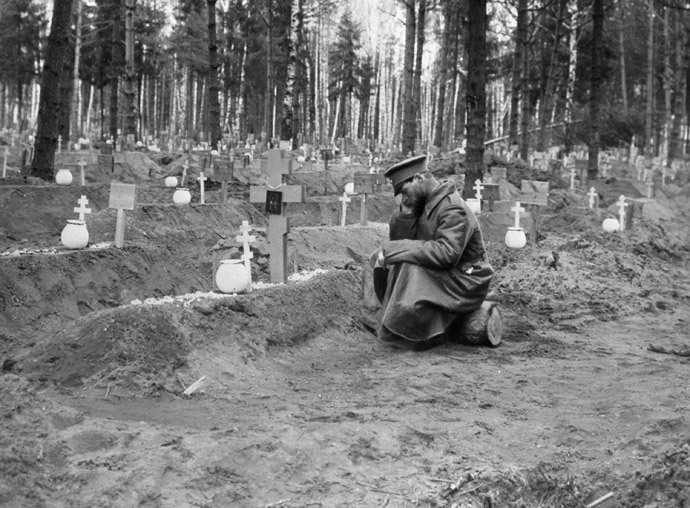Twilight of the Empire: 10 facts about Russia in WWI

With a century passed since the beginning of World War I, a memorial has been inaugurated in Moscow to honor the 2 million lives the conflict cost Russia. But what was WWI to the country, which saw its military campaign collapse amid the 1917 revolution?
World War I began for Russia on August 1, 1914, less than three years before the revolution which brought down the royal family. On that day, Germany declared war on the Russian Empire. This was four days after the official beginning of WWI and a just over one month after the heir to the throne of Austria-Hungary, Archduke Franz Ferdinand, was murdered in Sarajevo by Bosnian Serb nationalist, Gavrilo Princip.

Russia fought WWI together with its Entente allies – France and the UK, which were supported by over two dozen states, including the US, Japan, Serbia, Italy and others. On the opposing side were the Central Powers – Germany, Austria-Hungary, the Ottoman Empire and Bulgaria.

A total of 60,000 soldiers were killed or taken prisoner as result of a failed Russian offensive in East Prussia in late August 1914. However, Russia’s involvement also became a major distraction for the German Empire, preventing it from achieving a successful blitzkrieg on the Western front and occupying France.

In September 1914, Russia inflicted a painful defeat on Austria-Hungary, claiming large territories in Galicia (now Ukrainian territory). Austria-Hungary lost nearly half of its 830,000 troops in the massive Galician campaign, raising doubts about its capabilities.

Advances by the Central Powers and a shortage of artillery shells forced Russia to withdraw from Galicia and Poland in June to September 1915, which was labeled the Great Retreat. Despite leading to numerous casualties, the maneuver exhausted Germany's offensive potential and allowed Russian forces to regroup.

The Brusilov Offensive in Galicia, in June-September 1916, was Russia’s greatest success during WWI. It saw the Central Powers losing 1.5 million troops through death or injury.

The Russians also conducted successful operations against the Ottoman Empire throughout 1916, taking control of the strategic cities of Erzurum, Trapezund, Erzincan and Mus. The Tsarist armies' achievements on the battlefield effectively inspired Romania to join the war on the side of the Entente.

However, the euphoria was short-lived. By early 1917, supply shortages, political instability and anti-war calls within the country seriously affected the battle capabilities of the Russian army, which failed to achieve significant military gains after the successes of 1916.

This further aggravated the crisis within Russia, where bread riots broke out in Petrograd and led to the revolution that brought down the Romanovs. The subsequent Provisional Government tried to keep Russia in the war, but the Bolsheviks swept to power several months later in the October 1917 revolution, using Vladimir Lenin's program of "Peace, Bread, Land" and "All Power to the Soviets" to win a majority of the workers, soldiers and peasants to their side.

Following the establishment of the world's first socialist state, the Bolsheviks fulfilled their campaign promise to take Russia out of the war, signing a peace treaty with the Central Powers. According to the treaty, signed in Brest-Litovsk on March 3, 1918, the new government canceled all Imperial Russia’s commitments to its allies.

WWI saw Russia paying the greatest price among the members of the Entente, with 1,670,000 troops and 1,070,000 civilians perishing in the conflict. The losing Central Powers Germany (2,036,897) and Austria-Hungary (1,496,200) had a greater military death toll, but managed to avoid Russia's crippling civilian losses.

You can share this story on social media:














